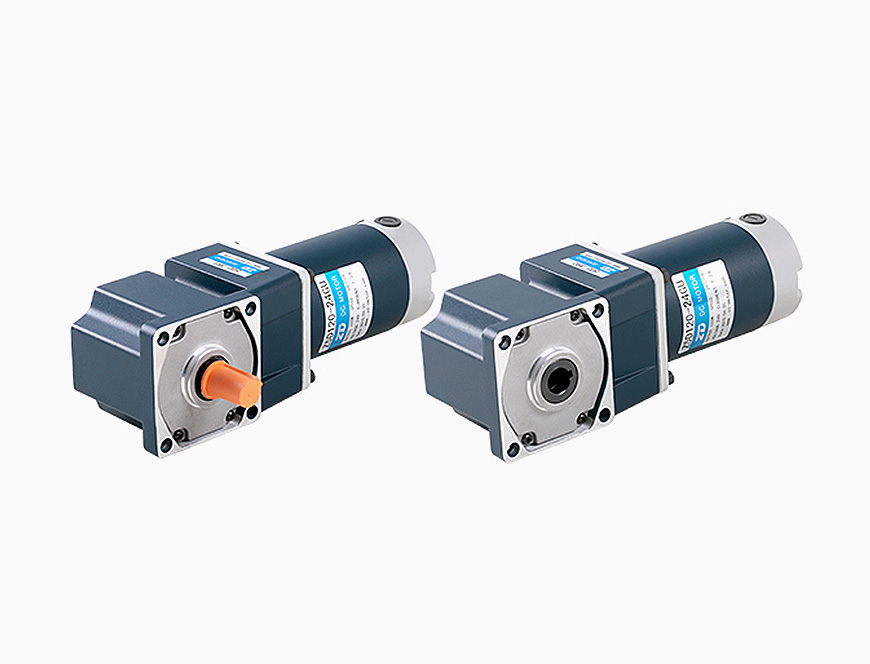Summary:...
From packaging to dissemination, brushless DC servo motors now occupy a share in various industrial fields. They provide high torque and smooth rotation (with smaller torque fluctuations) and can save costs better.
Design engineers usually rely on existing brushless DC motors as independent components to be placed into their designs. However, it usually makes more sense to order a customized motor-especially if it cannot fulfill the application requirements.
In contrast, brushless DC motors and motor components can be designed to fit in compact or irregular spaces without sacrificing torque density. The motor can be customized according to the requirements of the operating environment-whether the threat is heat, corrosion, or electromagnetic.
Another reason for customizing a brushless DC motor is to reduce costs. One might guess that customized measures will be very expensive, but in many applications, the opposite is true. This is because custom components allow for functional integration, which can minimize the number of components on the bill of materials and the assembly time required to assemble all components together.

Quick Look: Brushless DC Motor and Stepper Motor
In this article, our focus is on brushless DC motors. In fact, the high torque and compact size of brushless DC motors are becoming more and more common in today's servo applications. Their performance design is better than traditional stepper motors-mainly by improving the performance of servo machines-and reducing maintenance requirements.
Of course, stepper motors (especially closed-loop types) perform very well in several motion-axis types. However, motion design requires advanced position control, high axis speeds and space savings. More specifically, many of these torque-intensive motors provide approximately three times the power of stepper motors. The difference is that the stepper motor needs to pass more poles to deliver precise positioning under open loop control. On the other hand, the brushless DC motor can provide top positioning without sacrificing rotation speed and torque. For robot arms that require higher speed movement under closed-loop control to packaging machinery, brushless DC motors are an excellent choice.
Example 1: Customized brushless DC motor on AGV wheels
For the application of brushless DC motors, an emerging application is automated guided vehicles or AGVs. AGVs will be an integral part and automated warehouses in future assured factories. Because the brushless DC motor can rely on performance in different speed and torque ranges. Therefore, in robotic vehicles, they are very suitable for continuous rotary joints.
Example: A new AGV design utilizes two customized brushless DC motors.
The AGV's first motor is a 2kw 120mm motor with integrated brake and encoder-and an optional wheel and tire. This motor integrates a compact but high torque reducer. This arrangement increases the rigidity of the transmission system-and saves space and cost.
The AGV's second motor is a similarly smaller system based on a 1kw 80mm motor. It delivers the reduction ratio to 16:1-this in turn allows a speed of 2m per second. This increases the carrying capacity and increases the optional case selection. This allows engineers to concentrate the load of the AGV on the output bearing of the motor to reduce the bending moment load.
Example 2: Through-hole table for inspecting heavy workpieces
Another machine built into the inspection and classification process that requires challenging load, speed, and size requirements, the supplier's engineer configures and integrates a rotating passing table and a servo motor. This through-hole table uses the advantages of a servo motor, a cam divider, and a DC motor for top positioning and hardness (the cost is only similar to a similar table based on DC motor technology)
Example 3: Customizing a brushless DC motor with a planetary reducer
However, another motion-control application utilizes a customized brushless DC motor with integrated planetary reducer. This optimized motor can help the machine meet different speeds, voltages, and embedded applications-and the high-quality collection maximizes controllability. In more detail, the customization of this application requires a brushless geared motor for speed control applications:
(1) The length of an overall end
(2) Planetary reducer with 25:1 reduction ratio.
(3) The use of 48v bus voltage.
(4) Feedback from high resolution encoder
(5) Reversing model
(6) Under the condition of 160rpm, the torque output exceeds 2.5NM
